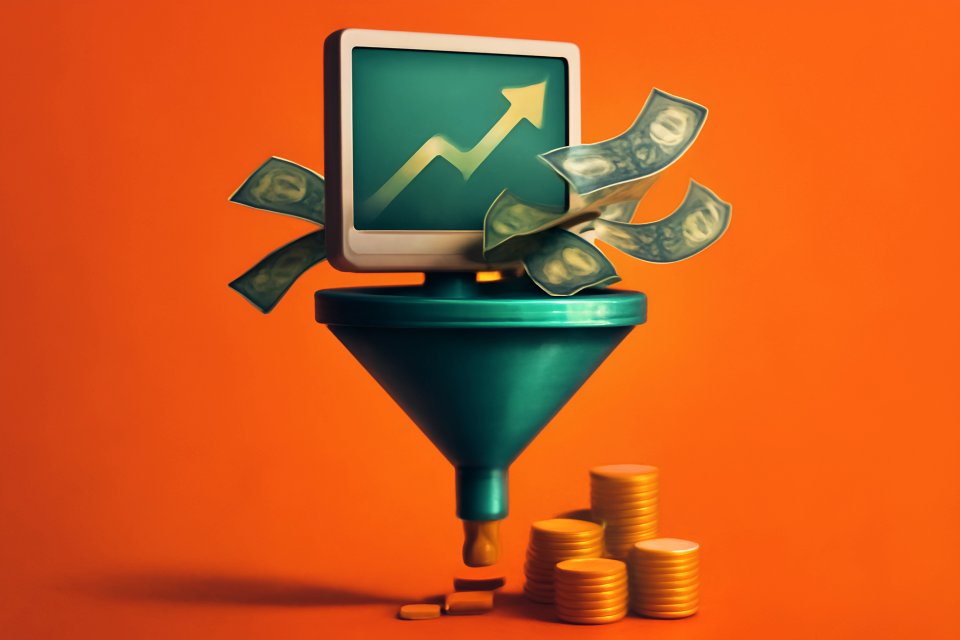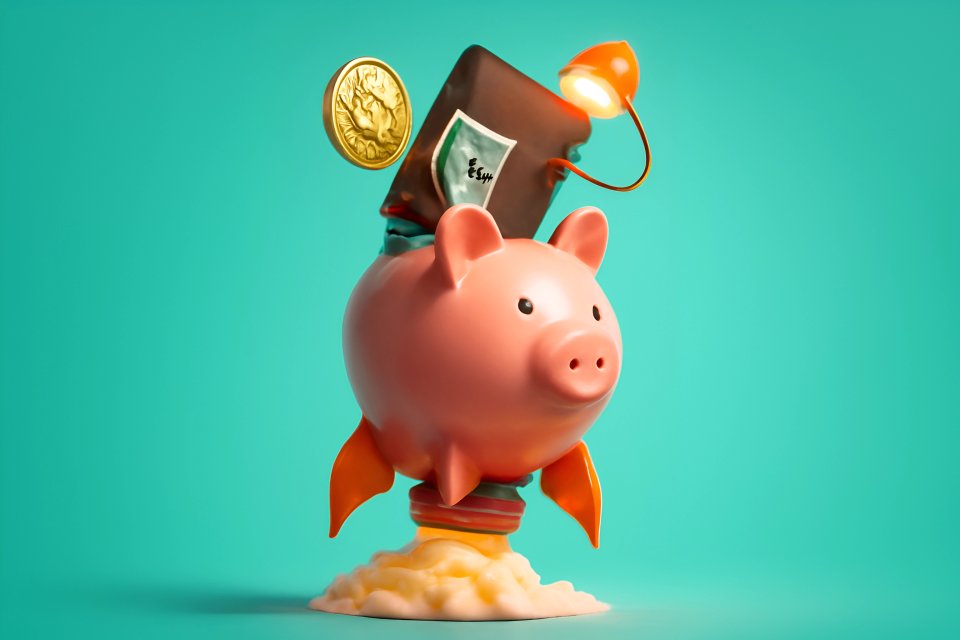
Let’s be honest. You’re grinding. You’re hustling on Fiverr, Upwork, or TaskRabbit, trading your precious, unrecoverable time for money. It pays the bills, sure, but it feels like you’re stuck on a hamster wheel, doesn't it? What if that active grind, that daily hustle, could be the very foundation for something that pays you while you sleep?
This isn't another article promising you a four-hour workweek with zero effort. This is about a strategic pivot. We're talking about a fundamental shift from doing the work to owning the system. It's time to stop being just a service provider and start becoming an asset owner.
This guide will give you a realistic, step-by-step framework to transform your active freelance gigs side hustle into a source of sustainable passive income with micro-jobs. You're about to learn how to move from trading hours for dollars to building an engine that works for you, day in and day out.
What We Mean by "Passive Income" (The Earnist Philosophy)
The term "passive income" gets thrown around a lot, often conjuring images of sipping cocktails on a beach while money magically appears in your bank account. Let's cut through the hype. When we talk about passive income, especially in the context of freelancing, we are not talking about a get-rich-quick scheme with no work involved. Freelancing is, by its very nature, an active pursuit.
Our philosophy is different. For us, "passive" means front-loading the effort. It means you invest your time, skills, and knowledge upfront to build a system, a product, or an asset that generates revenue with minimal ongoing maintenance. As noted in a comprehensive overview of passive income methods by Shopify, the goal is to create something once that can be sold over and over again.
The ultimate objective is to break the direct link between your time and your income. You need to stop trading hours for dollars and start building scalable assets based on the very skills you've already proven in the gig economy. This is how you build real wealth and reclaim your freedom.
The 3-Phase Framework for Turning Gigs into Passive Revenue
This journey from active gig worker to automated asset builder can feel overwhelming. Where do you even start? We’ve broken it down into a simple, three-phase framework that provides a clear roadmap from where you are now to where you want to be.
Phase 1: The "Earn & Learn" Stage (The Foundation)
This is where you are right now, and it’s the most critical phase. You need to lean into your active work on platforms like Upwork, Fiverr, Amazon Mechanical Turk, and TaskRabbit. But here's the mindset shift: your primary goal isn't just to make money. Your goal is to gather intelligence.
Every gig is a piece of market research. Pay close attention to the problems your clients have, the questions they ask repeatedly, and the tasks they need done over and over. According to Coursera, choosing an income stream that aligns with your existing skills and resources is a key predictor of success. Your active work is your laboratory for discovering what the market truly values.
Think of yourself as a detective. You are on the hunt for patterns, pain points, and profitable problems. To get started, you need to know how to identify high-paying freelance opportunities, as these gigs often reveal the most valuable problems to solve.
Phase 2: The "Identify & Systemize" Stage (The Pivot)
Once you've spent time in the trenches, you'll have a goldmine of data. Now it's time to analyze the patterns you uncovered in Phase 1. This is the pivot point where you transition from a doer to a thinker, from a service provider to a strategist.
Ask yourself these critical questions:
- What specific task do I perform repeatedly that could be turned into a template or a checklist?
- What question do my clients ask over and over that could be answered comprehensively in a guide or an ebook?
- What part of my workflow, from onboarding to project delivery, could be productized into a kit or a system?
The goal here is to pinpoint one specific, high-value solution that you can package and sell. You're looking for the intersection of what you're good at, what you enjoy, and what people are already paying you for. This is the first step in creating one of many potential digital side hustles for extra online income.
Phase 3: The "Build & Automate" Stage (The Creation)
This is where you roll up your sleeves and front-load the work. You take the idea you identified in Phase 2 and build the actual digital asset. This could be an ebook, a set of templates, a mini-course, or a bundle of scripts. This is where you apply passive income strategies and concepts of micro-job automation.
This stage requires a focused burst of creative energy. You are building the machine that will work for you later. The beauty of digital products, as highlighted by Printify, is their low startup cost and high-profit margins, making them an ideal asset for freelancers to create.
Once your product is built, you'll set up a system to sell and deliver it automatically. This is the final piece of the puzzle, turning your hard work into a hands-off income stream. Our step-by-step guide to launching a digital side hustle can walk you through this critical process.
Putting It Into Practice: How to Turn Your Hustle into an Asset
Theory is great, but what does this look like in the real world? Let's look at five concrete examples of how you can transform a common freelance gig into a valuable, income-generating asset.
The Graphic Designer
- From This Gig: Creating one-off logos for clients on Fiverr for
$50a pop. - To This Asset: Selling a pack of 50 pre-made, niche-specific Canva templates for social media posts on Etsy for
$25. After the initial creation, every sale is nearly pure profit, and you can learn more about mastering passive income with digital template sales to perfect your strategy.
The Writer/Editor
- From This Gig: Writing individual blog posts for clients at
$0.10per word. - To This Asset: Creating a
$49ebook titled "The 5-Day SEO Kickstart for Small Business Owners" and selling it on Gumroad. You leverage your expertise once to help hundreds of people.
The Virtual Assistant
- From This Gig: Managing schedules and onboarding new clients for a handful of entrepreneurs.
- To This Asset: Building a "New Business Starter Kit" for
$99with Notion templates for project management, client onboarding checklists, and invoice templates. This is a perfect example of a low-cost side hustle with high value.
The Transcriptionist
- From This Gig: Transcribing audio files for
$1per audio minute on a freelance platform. - To This Asset: Creating a
$199mini-course on "How to Become a Top-Rated Transcriptionist and Maximize Your Earnings," hosted on Teachable. You're no longer selling your time; you're selling your knowledge and experience.
The Social Media Manager
- From This Gig: Managing 3-4 social media accounts for local businesses.
- To This Asset: Selling a downloadable "30-Day Real Estate Agent Content Calendar" for
$37with daily prompts, caption templates, and hashtag strategies. You can create different calendars for various niches, multiplying your income streams.
The Tech Stack for Your New Passive Income Engine
You don't need to be a tech wizard to build your passive income machine. The right tools can make all the difference, automating the creation, sales, and marketing of your new digital asset. Here is a simple, powerful tech stack to get you started.
| Category | Recommended Tools | Purpose |
|---|---|---|
| Product Creation | Canva, Notion, Google Docs, Descript |
To design templates, write ebooks/guides, and create video content. |
| Selling Platforms | Gumroad, Etsy, Payhip |
Low-effort platforms to sell your digital products directly to consumers. |
| Course Platforms | Teachable, Podia |
For building and hosting more in-depth courses or workshops. |
| Marketing | ConvertKit, MailerLite, Buffer, Later |
To build an email list and schedule promotional social media content. |
These tools are designed to be user-friendly and affordable, allowing you to focus on creating a valuable product. For a deeper dive, check out our beginner's blueprint for earning passive income with digital tools, which provides a complete walkthrough.
The Honest Truth: This Isn't an Overnight Process
Let's have a moment of real talk. Building a sustainable passive income with micro-jobs is not a magic button. It's a strategy that requires patience, effort, and the right mindset. Anyone who tells you otherwise is selling you a fantasy.
First, this requires significant upfront work. The "passive" part only comes after you've invested the time and energy to research, create, and launch your digital asset. As many successful creators emphasize, passive income requires upfront work but can yield substantial long-term returns if you stay the course.
Second, you must start small. Don't try to build a massive, all-encompassing course as your first product. A $10 template, a $15 ebook, or a $20 checklist is a perfect starting point. Your goal is to get a win on the board, validate your idea, and build momentum.
Finally, marketing is not optional. Creating a brilliant product is only half the battle. You have to tell people it exists. Just as affiliate marketers must build traffic to earn commissions, you must promote your product to make sales. This is a crucial step in building a truly profitable online venture.
Start Building Your Future, One Asset at a Time
The gig economy doesn't have to be a trap. It can be the most powerful launchpad you've ever had, providing you with the cash flow and market intelligence to build something that lasts—something that serves you. You have the skills. You have the knowledge. Now you have the framework.
The path is simple:
- Earn & Learn: Use your current gigs as paid market research.
- Identify & Systemize: Find a repeatable problem you can solve.
- Build & Automate: Package your solution into a digital asset that sells itself.
This is how you move from being an employee of your own business to being the owner of a real asset. As you grow, you can start building a digital income portfolio for true financial freedom.
Look at the work you're doing right now. What is one skill or repetitive task you could package into your first digital product? Share your idea in the comments below—let's brainstorm together!














